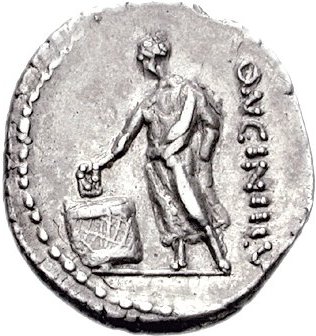Top Qs
Timeline
Chat
Perspective
List of Roman tribes
From Wikipedia, the free encyclopedia
Remove ads
Tribes (Latin: tribus) were groupings of citizens in ancient Rome, originally based on location. Voters were eventually organized by tribes, with each Roman tribe having an equal vote in the Tribal Assembly.

Original tribes
Latin tribus perhaps derives from the Latin word for "three", trēs. The Romans believed that through much of the early regal period of Roman history, there were only three tribes:[1]
- Ramnes
- Tities
- Luceres
These names were also preserved in the names of six of the later centuries of Roman equites.
Later tribes
Summarize
Perspective
Livy records that in 495 BC the number of tribes was increased to 21,[2] and the number of tribes reached 35 in 242 BC and was not expanded further.
Urban tribes
Attributed by Livy to the sixth Roman king, Servius Tullius,[3] the urban tribes were named for districts of the city and were the largest and had the least political power. In the later Republic, poorer people living in the city of Rome itself typically belonged to one of these tribes.[4] Freedmen were also traditionally assigned to one of these tribes.
- Collina
- Esquilina
- Palatina
- Suburana
Rural tribes

Landowners and aristocracy traditionally belonged to the 31 smaller rural tribes. Many rural tribes derive from prominent Roman gentes, or family names, such as Cornelia or Fabia.
- Aemilia
- Aniensis
- Arniensis
- Camilia
- Claudia
- Clustumina
- Cornelia
- Fabia
- Falerna/Falerina
- Galeria
- Horatia
- Lemonia
- Maecia
- Menenia
- Oufentina/Oufetina
- Papiria
- Poblilia
- Pollia
- Pomptina/Pontina
- Pupinia
- Quirina
- Romilia
- Sabatia/Sabatina
- Scaptia
- Sergia
- Stellatina
- Teretina
- Tromentina
- Velina
- Voltinia/Votinia
- Voturia
The official order of the tribes
There was an official order of the tribes. Literature and archaeological documentation show that the urban tribes are enumerated according to a counter-clockwise circuit of the city. On that basis, Lily Ross Taylor[5] suggested that the same held for the rural tribes.
Archaeological findings of tesserae led Michael Crawford[6] to suggest that the tribes were ordered according to the principal roads leading counter-clockwise from Rome (Ostiensis, Appia, Latina, Praenestina, Valeria, Salaria, Flaminia and Clodia).
Remove ads
See also
Notes
Footnotes
- Poblilia is the only one of the later rural tribes with a gens name, but, unlike the old patrician tribal names, Poblilia was a well-known plebeian nomen.
References
External links
Wikiwand - on
Seamless Wikipedia browsing. On steroids.
Remove ads
